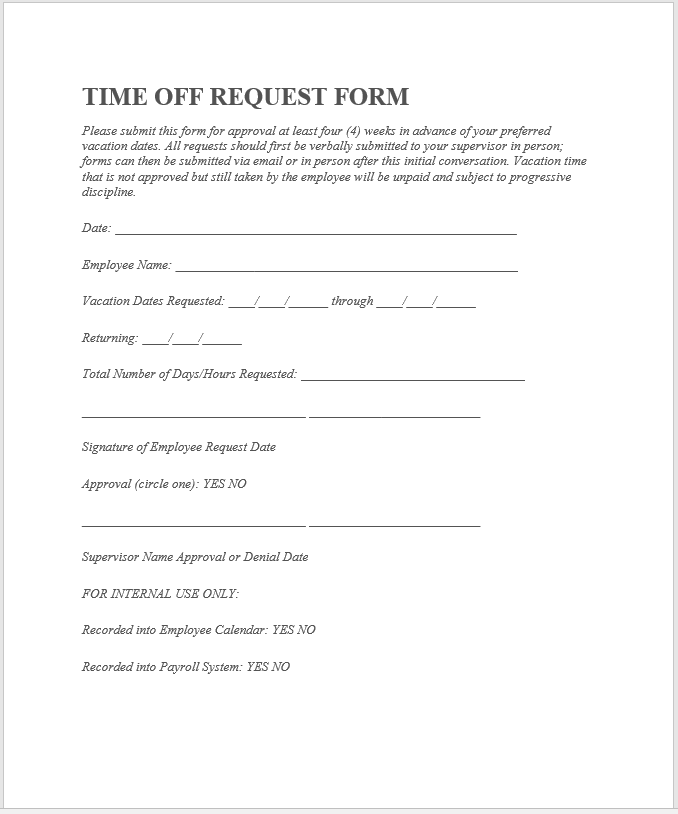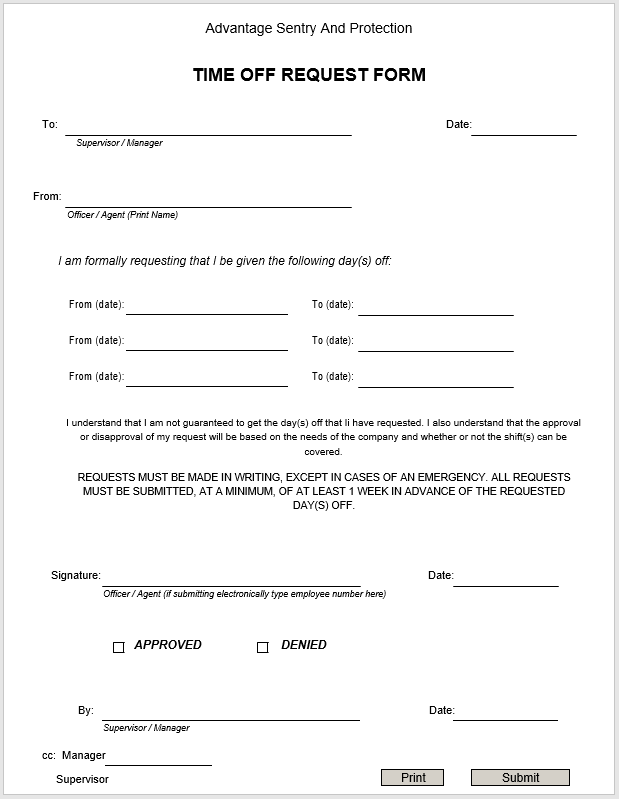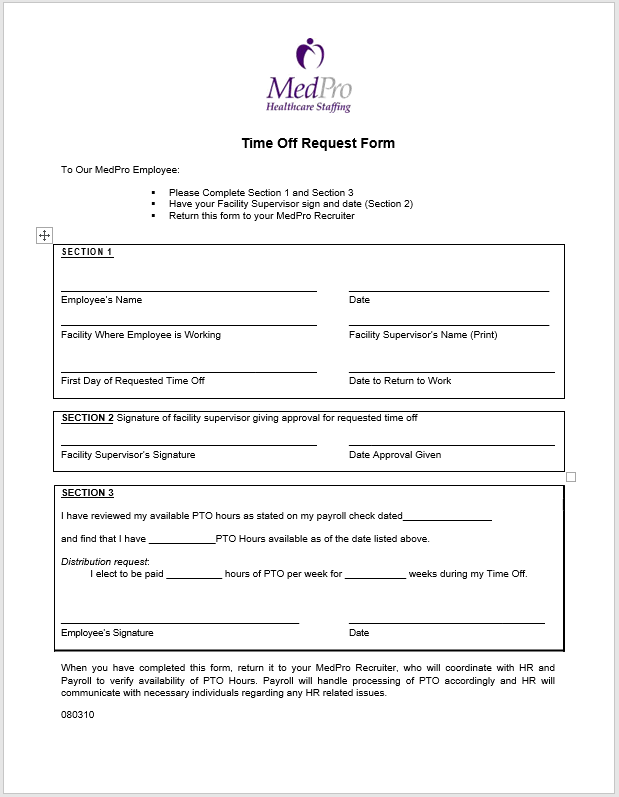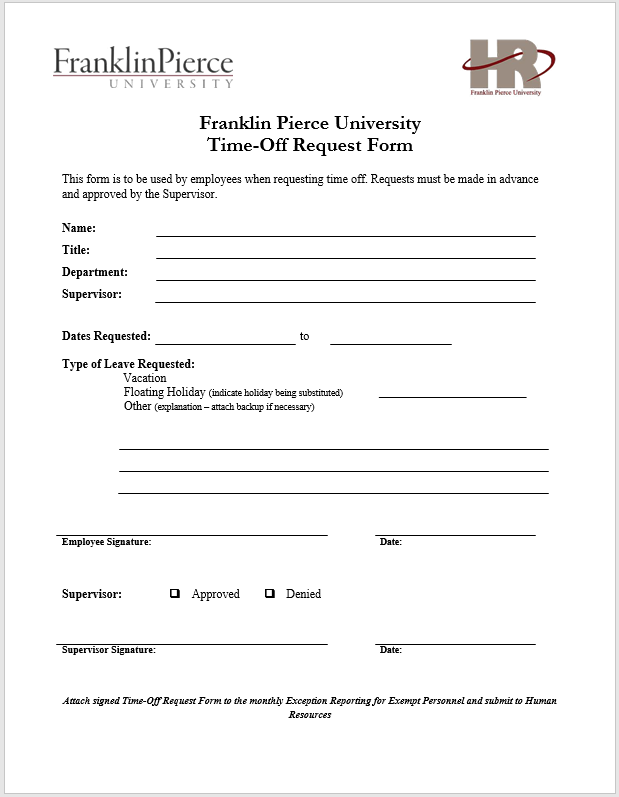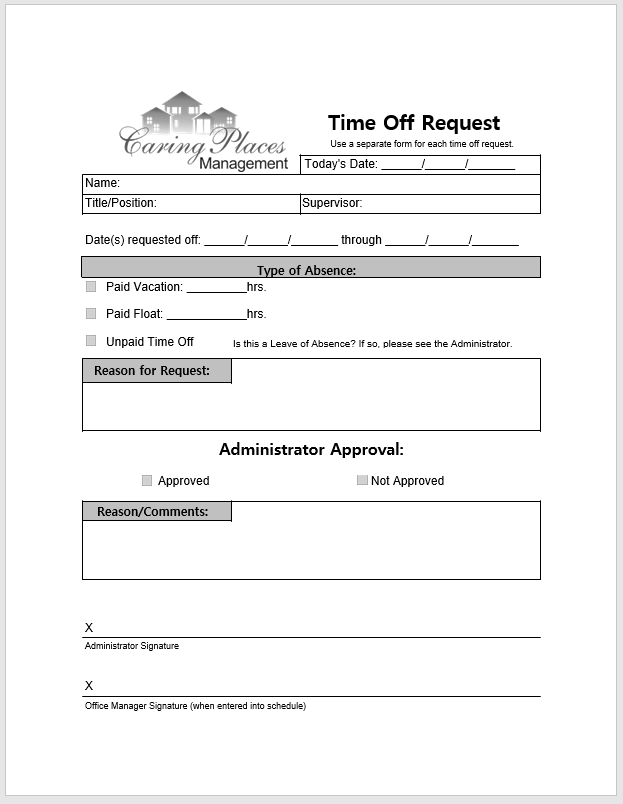Check out these 30 Free Employee Time-Off Request Forms to download immediately in order to study and then create your own Employee Time-Off Request Form for your own office. You can also download our collection of Employment Certificate Templates.
Being a manager or supervisor is not easy especially if you are the one who approves or rejects employees’ time off requests. You know how frustrating it is to get multiple time-off requests on a single day and then everyone is just annoying by saying how important it is for them to get the time off and you just can’t decide which request should be approved and which should be rejected. There is a simple and very comprehensive method of dealing with this situation. It’s called an employee time off request form. This is a formal request letter that is filled by the employees and you being the manager or supervisor receive this letter and decide if it should be approved or rejected.
Contents
Guidelines to create a Time-off Request Form:
Before creating a time off request form, you being the supervisor or manager should understand what information you want to see if an employee requests time off. For instance, you want to know what is the reason for time off, how urgent and important it is when the time off will start, how many days they require, how they will manage their work in their absence and if they have someone who will fill out for them or any other specific details. This part is customizable and it mainly depends on each individual supervisor or manager what he finds necessary for approving or accepting time off requests.
Enlist Instructions and Guidelines:
Once you understand what information should be presented on the time off request form, the next step is to define specific instructions and guidelines for submitting a time off request. For instance, you need to tell the employees how many days in advance they need to submit the request form, who should receive the form, how they will get the notification of its approval or rejection, what happens if there is an overlap, who has the final authority to approve or reject the request and if the manager or supervisor has the power to decrease the number of time-off days.
Create a format that’s simple and Universal:
Once above steps are completed, it’s time to create the actual form that the employees should use. This form should be simple so everyone can understand it and yet comprehensive enough to include all required and necessary information. Keep in mind that you need to create a template kind of form that employees can fill and this way they can use the same format in the future instead of downloading a new format of time off request form from internet.
Now that the instructions are completed and you have created the form, it’s time to gather all of the employees and workers in your department and update them about the use of the time off request form. You can call a formal meeting or just announce that there is a new format of time off request during lunch hour among your subordinates and then you can ask them to use it from that point forward. A good approach would be to share a rough draft of the form and instructions with the employees and ask for their opinion. This way if there is any problem or information missing, you can discuss it together.
Free Employee Time-Off Request Forms
Here are previews and download links for these Free Employee Time Off Request Forms prepared mostly in MS Word format.
Benefits of Using Time-Off Request Forms
By utilizing time-off request forms, companies can effectively plan and manage employee absence. Structuring their system allows managers to assess leave requests before the fact and ensure even distribution of workloads. This situation where more than one employee takes time off is avoided, which would cause understaffing and reduced productivity. Leave management systems, when well documented, help in full functionality even in the absence of team members. Organizations that use time-off request forms can create balanced work environments where employee schedules can be optimized without any disruption to daily operations.
Ensures Fairness and Transparency in Leave Approval
Formalized leave requests promote fairness since all the employees will use the same procedures to seek time off. Without a structured approach, leave approvals may be subject to possible bias or inconsistencies. Time-off request forms might eliminate favoritism by giving equal opportunity to all employees to apply for leave per company policies; therefore, employers view requests objectively and forward their approvals for time off based on staffing versus person preferences. This level of transparency improves workplace morale and in so doing fosters a sense of trust between employees and management.
Enhances Compliance with Company Policies and Labor Laws
Employee absences from work are subject to law and company-specific leave rules. Leave request forms, therefore, facilitate the documentation of such absences according to legal and contractual obligations. HR achieves this by keeping adequate records of approved leaves and tracking leave balances for the employee, including paid time off (PTO), sick leave, and unpaid leave, to prevent violations of policy. By maintaining a record of leaves approved, organizations can prove their compliance with employment regulations while shielding themselves from potential legal entanglements. A systematic policy for leave requests ensures that every approval for leaves would be ideal for labor laws and company-specific policies.
Reduces Last-Minute Absences and Workplace Disruptions
Unplanned employee absences continue to be a major blow to the seamless operation of a firm and business productivity. Time-off request forms encourage staff members to plan their leave ahead of time and make the necessary adjustments to work. With advance information regarding absences, a manager can arrange for temporary coverage, redistributing task loads and preventing workflow interruptions. The formal leave application process, as a result, will significantly help in the reduction of the last-minute call-offs and enable continuous business operations even when the employees are away.
Improves Record-Keeping and HR Efficiency
A well-documented leave management system helps HR departments keep track of employee absentees more efficiently. Proper acknowledgment forms provide irreversibility to absences and, as a result, would enable monitoring with regards to absenteeism and potential problems. These records come in handy for payroll processing by ensuring that requisite leave balance and deduction amounts are accurately calculated.

